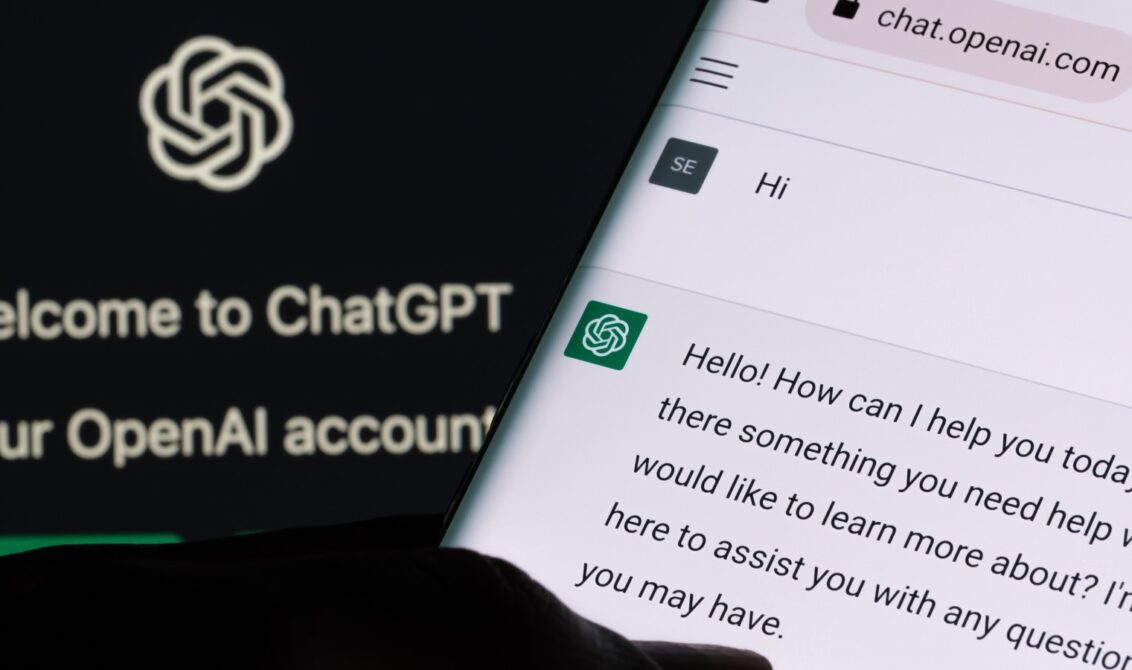
AI is by no means anything new. The concept dates back to 400 BC when according to Greek mythology, Talos, a giant winged robot made of bronze, was created to protect Europa by flying three times a day around the island of Crete.
My own first association with AI in education came after watching the 2001 Steven Spielberg film AI Artificial Intelligence. Along with the film, there was a website that featured a chatbot. People could type in questions, which the bot would then answer.
I used this with a class of 12-year-olds in a school in Morocco to help them develop their written fluency and give them the opportunity to communicate in English. At the time, they didn’t know the ‘person’ answering their questions was an AI bot. They did eventually find out, though.
Why is everyone talking about AI?
At that time, AI could hold a simple conversation, but it had trouble with identifying context, so the software thought that each new question was a new conversation. It couldn’t understand referencing previous turns.
Since then AI has made huge advances. Fast forward to November 2022 when a company called OpenAI launched a program called ChatGPT. ChatGPT is remarkable because it can create very detailed responses to complex questions. It can also respond to follow-up questions and refine, change and even evaluate its own output.
The most interesting and controversial aspect of this for educators is that you can enter any assignment question and get ChatGPT to write you a passably good answer in seconds. You can then ask it to refine the answer, adding in any personal opinions or details you choose. In addition, ChatGPT can create a rubric for marking the assignment. It can then write detailed feedback on the assignment it has produced.
Of course, this raises many issues connected with academic assessment, the potential for cheating and the development of both students’ thinking and writing skills.
On the other hand, it does also offer huge opportunities for the educational community to rethink how they evaluate students’ knowledge and thinking around a subject. For many, this is a change that’s long overdue.
How can AI be used in the classroom?
ChatGPT and the creation of academic texts isn’t the only area of education or of the workplace where AI has been making inroads, though.
There are a number of tools now available either for free or at very low cost that teachers and students can take advantage of. Futurepedia lists hundreds of AI-based tools that are capable of a vast range of different tasks. Here are a few examples:
Text-to-speech software
Movio has been making significant improvements in the quality of text-to-speech software. Using Natural Language Processing, AI can better understand the context of the text being produced. This enables the AI-produced speech to be more accurate in replicating human intonation and pronunciation patterns.
This combined with AI-produced avatars and presentations generated from text input can enable us to produce very convincing instructional videos that would usually require actors and expensive video production equipment.
Make images and illustrations
DALL·E 2, which is also produced by OpenAI, can produce original illustrations based on text input. Just type in a description of what you want to see in the image, then tell it what style you want, and the AI software will produce a range of images for you to choose from. This is great for adding illustrations to our students’ creative work or the materials we produce for students.
Detect plagiarism
Programs like Detect GPT, a free Google Chrome plugin and Originality.AI, claim to be able to detect whether AI has been used in the composition of student assignments. This could become an essential tool for teachers as the use of AI writing tools become prevalent in schools.
Chat with historical figures
If you are teaching history, your students can now chat with characters from history and ask them questions using Character.AI. Character.AI hosts a collection of chatbots which are powered by information about various historical and fictional characters from Plato to SpongeBob. Users can choose which ones they want to interact with and then get them to answer questions.
This is a much more natural way of finding information and pushes students to come up with the right questions to ask. For extra help, they can ask ChatGPT to provide questions for them.
Produce stories
If you teach younger children, then something like Storywizard.AI can be used to produce short illustrated stories for them. Include your students as characters, or can add any specific character or theme you want to explore with them. This can be done in minutes and then enhanced and edited to make it more suitable for your students.
Enhance your searches
Add a free Google Chrome extension that will show information from ChatGPT alongside any of your searches. This gives you more background information about your search requests and can help guide students in their selection of which links to explore when searching.
What are the pros and cons of AI software in education?
Potential benefits to the use of AI software in education
- Chatbots can handle many of the FAQ type doubts that students commonly have. This could take some of the load off course tutors, especially those teaching online.
- AI can give students quite detailed feedback on written assignments, too. This can help them work more autonomously and also lighten the load for teachers when marking assignments.
- AI programs like ChatGPT can be used to rapidly create course materials that we can tailor to the needs, context, interests and level of our students. This is going to make it much easier to produce materials that are both differentiated and inclusive.
- AI software can support our students’ curiosity and autonomous learning 24/7. Any time they have a question, they can find a detailed and well-constructed answer.
Limitations of AI programs
- Any AI software is only ever as good as the data that powers it. Data can be biased, incorrect or use dubious sources. We need to make sure our students understand this and help them develop critical thinking skills to check the accuracy of the information.
- AI software can only produce output based on mixing together the sources of information and data that powers it, so it’s not really capable of producing anything that is truly ‘original’. Though, to be fair, much creativity and innovation is based on combining things that already exist.
- Despite all that it is capable of, AI can’t think. It doesn’t have opinions, morals or ethical values. It can only use data to respond to prompts.
- AI can make mistakes, so anything it produces needs to be checked against other trustworthy sources.
- AI is still trying to play catchup with the real world as it takes time to process and integrate new information. ChatGPT, for example, is at present based mainly on data from before 2021, so it has very limited knowledge of things that are happening after that time.
- Although at the moment many tools like ChatGPT are free, the for-profit arm of OpenAI has recently been valued at $29 billion. Therefore, it seems inevitable that at some point they will want and need to start generating more revenue.
What does the future of AI software hold for us in education?
Regardless of how we may feel about the role of AI software in education, we can be certain that it isn’t going away. If anything, its potential role will increase both in the classroom, the home and in the workplace.
In terms of producing written text, it’s likely that tools like ChatGPT will take over much of the ‘heavy lifting’ in our day today lives. That leaves us with the task of editing, adapting and checking the text for style and accuracy.
As educators with the task of developing and assessing students’ knowledge and skills, we are going to be faced with a number of decisions:
- We can try to ban AI tools and go back to handwritten paper-based exams, as some institutions are suggesting.
- We can try to educate ourselves and our students about how to work with AI in a productive way that enhances their ability to learn.
- We can look for new ways to evaluate our students’ abilities to think and prove their understanding of a topic.
Whichever way we choose to deal with the issue, I think we would all agree that we need to engage with and understand what AI can do. We also need to ensure that we are equipping our students with the skills they need for their future, while ensuring the integrity of the methods we use to assess and certify those skills.
Consider whether your school may need to conduct a digital skills gap analysis.
So, how about you? How have you used AI tools with your students? What do you think about banning AI? How do we develop students’ writing skills in an age where they can simply get most of the work done for them?
Subscribe to our blog
If you’d like to stay up to date with our articles in 2023, why not subscribe to our blog? You’ll get a fortnightly roundup of the articles you’ve missed straight to your inbox, plus links to free teaching resources.

